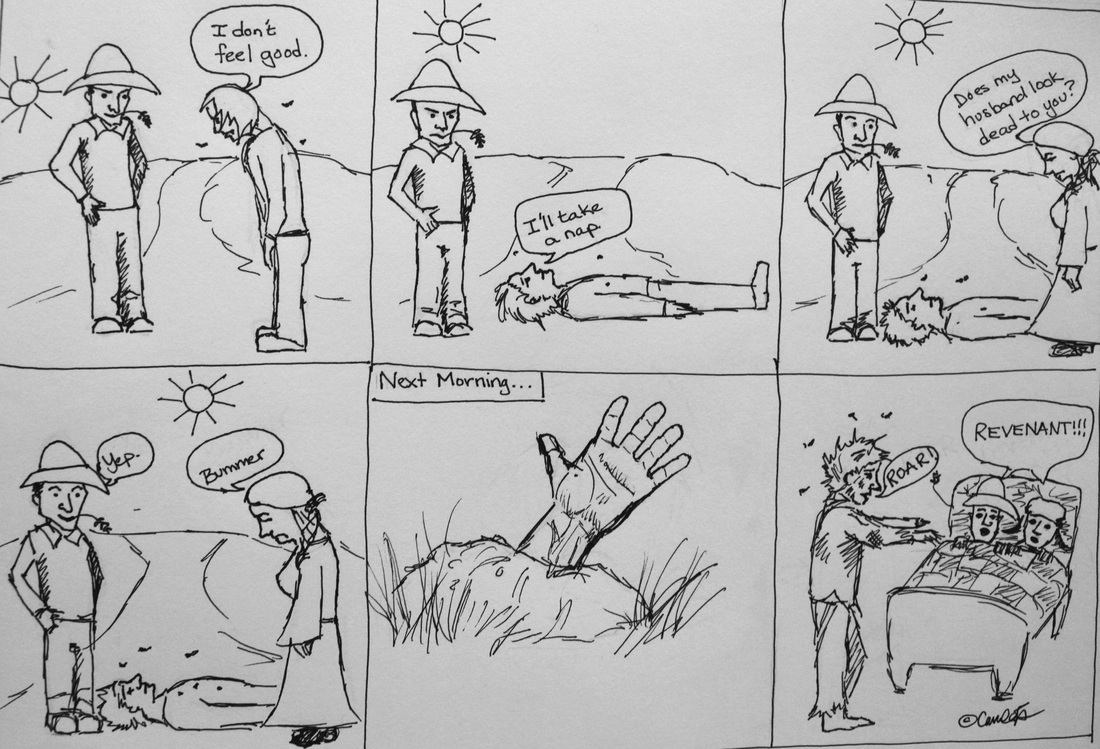|
The vampire is a newer creature, evolved from centuries of mythological beings that consumed human flesh and blood. Just about every civilization had their own brand of people eater. The Western European revenant is not the oldest legend, but it predates the vampire by at least half a century. The revenant is often described in the High Middle Ages as a bloated, discolored human that has returned from the dead only to hunt down their family and neighbors.
Where Did The Legend Begin? The High Middle Ages were about six hundred years before the discovery of bacteria. The discovery of bacteria happened approximately two hundred years before bacteria was definitely linked as a causative factor in disease. Without science, people had God, superstition, and a lot of fear. Death and disease were everywhere, proliferated by the belief that bathing was evil and a lack of any semblance of sanitation. People didn’t understand what death did to a body and sometimes they didn’t realize when a body wasn’t dead. The description of the revenant often involves bloating and discolored skin. People have theorized that the legend stems from grave robbers disturbing a decomposing body and scaring the crap out of themselves when the coffin lid springs and the body sits up. I imagine this scenario would be entertaining to observe were it not for the bloated body sitting up in its coffin. Even knowing spontaneous movement is possible, I would need a change of shorts (TMI?). These grave robbers probably needed a stiff drink and gathered at the local bar, telling the locals about their brush with a person who came back from the dead, especially since these robbers hacked at the body with their shovels and saved the village from being eaten. Did I mention bodies often leak fluids and have blood bubbling up from their mouths? It wouldn’t have been a huge stretch for these same grave robbers to tell their captivated audience that the body was drinking blood. A story with returned bodies craving blood would spread through a sleepy village like wildfire. Just as people are worked into a frenzy, someone gets sick. The illness is so severe that they are buried a little early (I believe the polite term is “premature burying”). In a dramatic twist of events, the - buried? bury-ee? - gets better and wakes up stuck in a box and scared out of his mind. Can you imagine clawing your way up to the surface, successfully escaping your own grave? Maybe it was a shallow grave or perhaps it was one of those tombs that had a lid that could be moved aside. After being ill enough to be mistaken for dead, it would be difficult to conquer either of those scenarios. The adrenalin that surges after realizing you’ve been stuffed into a box which is then stuffed into the ground would probably help. Once you’ve managed to claw your way out of a box and up through the earth, where do you go? Home. In a time when people thought illness spread because of witches and demons, a relative who was mourned and buried showing up covered in dirt, stumbling around from dehydration, was not a welcome sight. Someone declared dead by a priest would have no good reason to return home. They must be up to no good! The “lucky” bastard was probably attacked with a pitch fork and beheaded before he had a shot at saying, “I got better.” And that is how the legend began. Probably.
0 Comments
Leave a Reply. |
Camela ThompsonFreelance writer and Dark urban fantasy author featuring vampires with bite. My BooksCategories
All
Archives
July 2020
|

 RSS Feed
RSS Feed